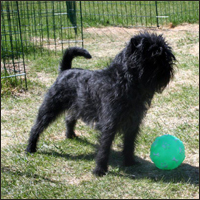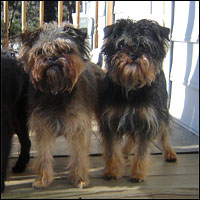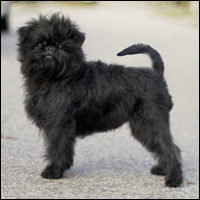Affenpinscher Breedstandard

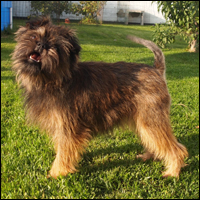
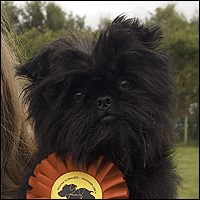
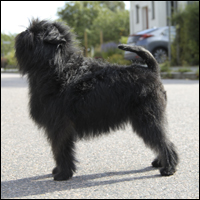
|
FCI (Fédération
Internationale Cynologique), which has its headquarters in Brussels,
is an international organization to which most countries' kennel clubs
are affiliated, which include Sweden. For each breed recognized by the
FCI establishes a standard in the breeds country of origin and for the
Affenpinscher it is Germany.
The standard is a description of the ideal dog in the race. The underlying exterior assessment of exhibitions, where the judge compares each dog with the standard. But you must remember that the standard is a painting in words and as such could be interpreted differently by different people. According to the FCI breedstandard for the Affenpinscher must the color be "pure black with black undercoat", which means (at present) that only the black color is approved. But as we breeders have experienced, it can out of a litter after black parents, born puppies who are of different color. This is because the affenpinscher was originally in several different colors, such as gray, black and various shades of red and black with brown markings, and also was common with white on chest and paws. To help get information on what colors are in our affenpinscher pedigrees, decided the SKK/Breeding Committee meeting June 15, 2006 to introduce color designations of the Affenpinscher. From 2007, newly registered Swedish-born puppies and imported Affenpinscher will get the different colors included in the Swedish pedigrees.
APK's breeding policy states "Work to reduce the number of breed restrictions that are unrelated to the health of dog breeds but limit the potential for effective utilization of existing dog material; if necessary remove breeding barriers based on differences in individual genes, for example, color, hair structure and size. |

